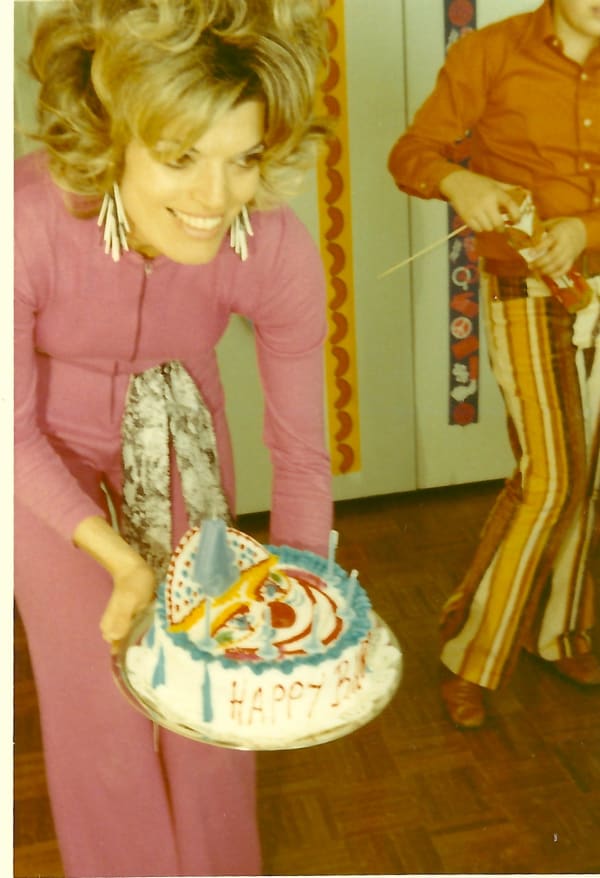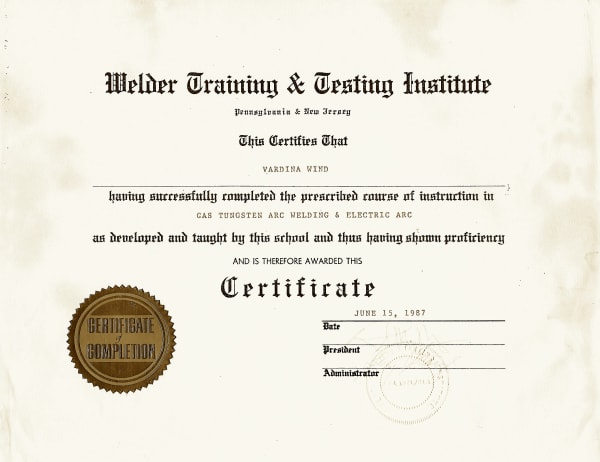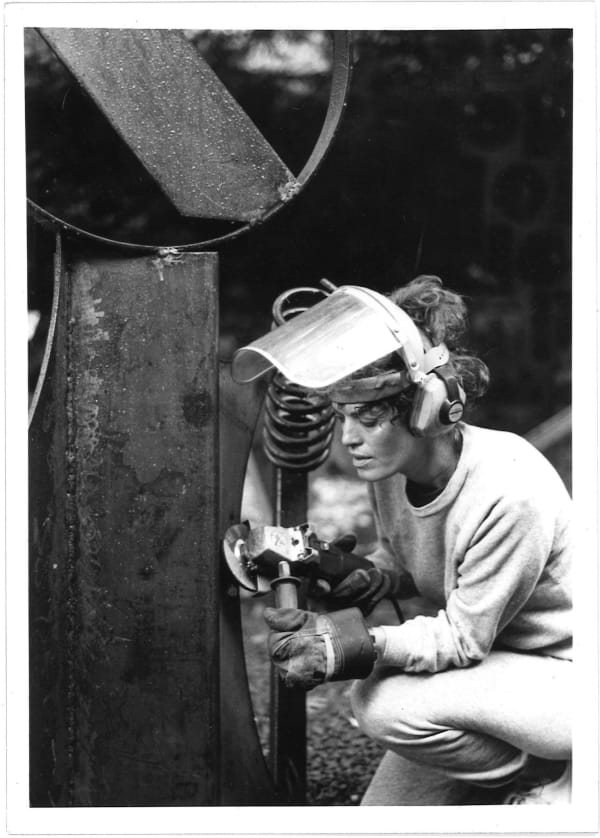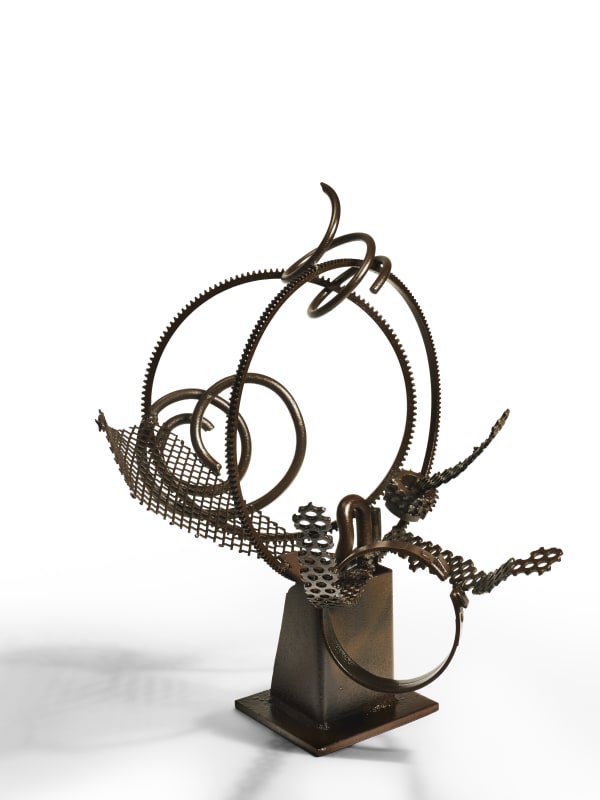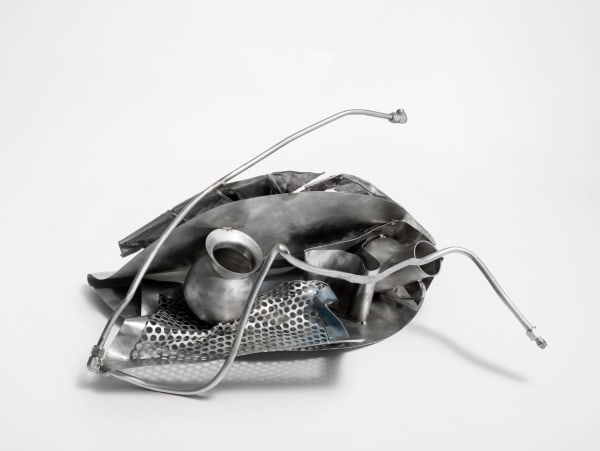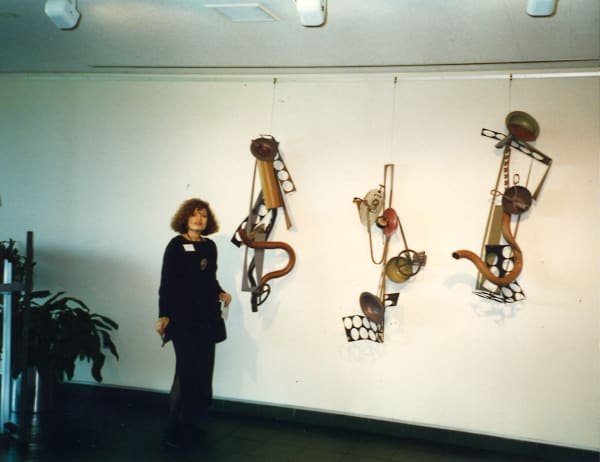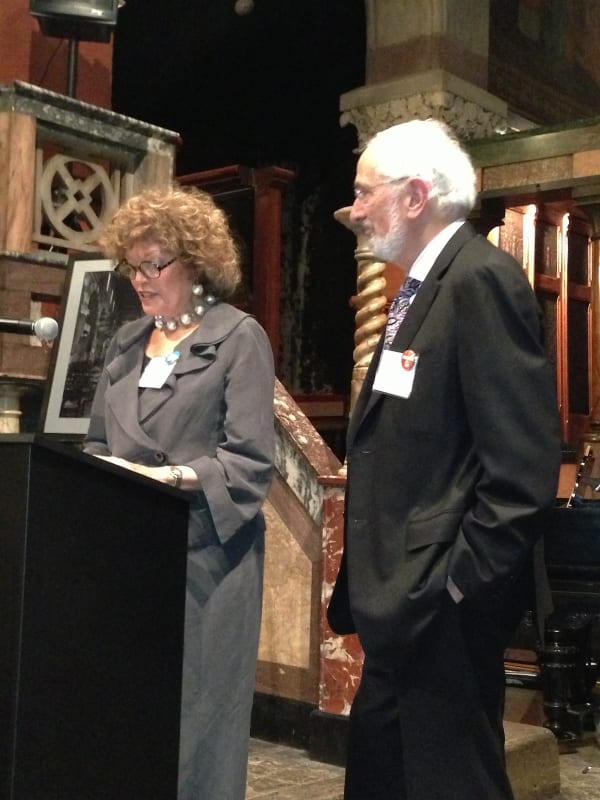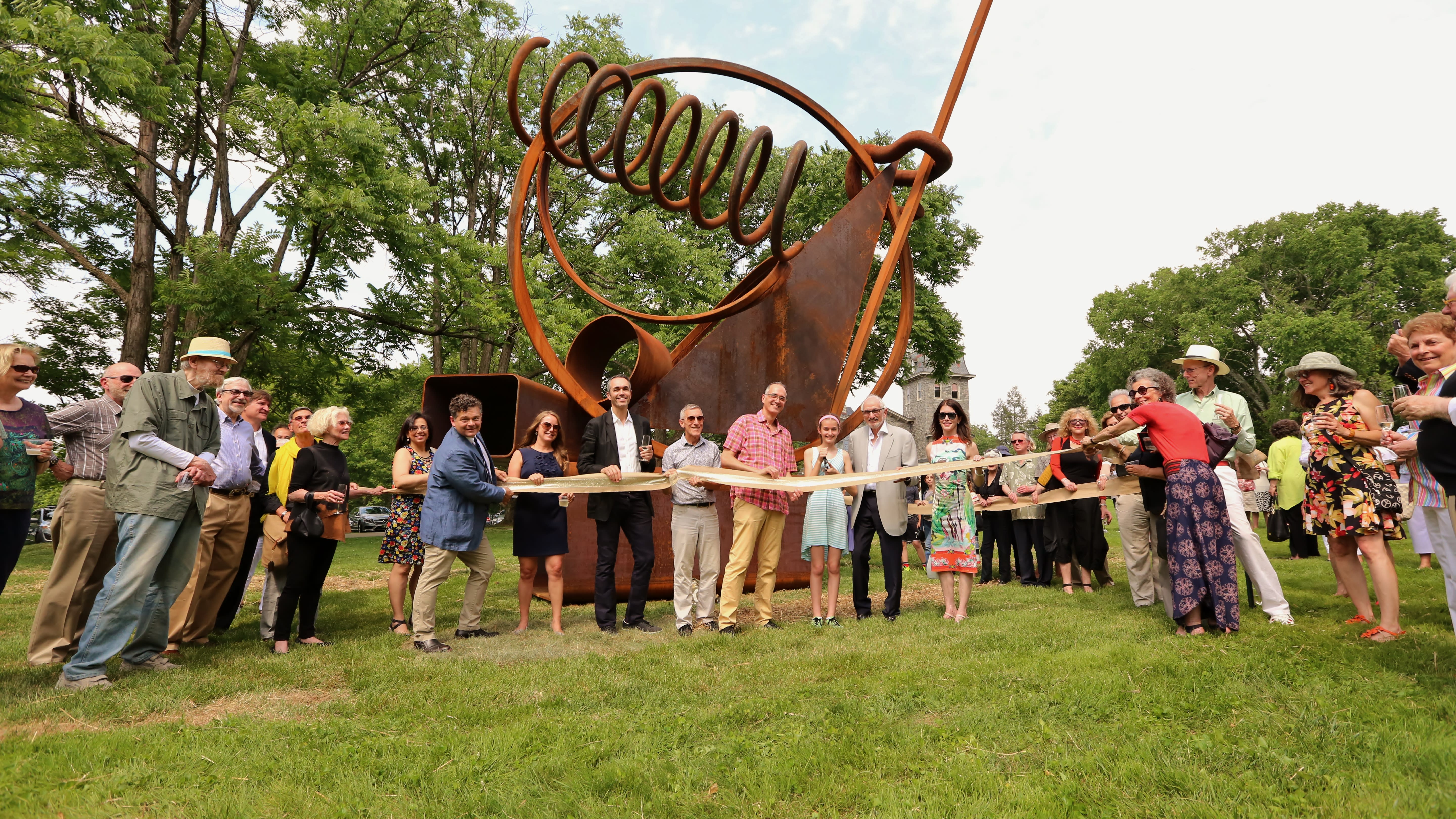-

-
BADASS LADY WELDER: Dina Wind
Vardina Luria was born in Afula, Israel (then British Mandate Palestine) on January 15, 1938. Her parents owned a gas station/garage on the main road to Damascus. They were Russian immigrants who had an appreciation for culture and education, though access to the arts was limited in this startup nation. Like all Israeli youth, she served in the army before college, rising to the rank of corporal, coding and decoding secret messages. Vardina then studied communications at the Hebrew University, Jerusalem. It was there that she met her future husband, Yoram Wind. In 1959 they married, and their son Yaron was born in 1961. The young family travelled to the United States in 1963, where Yoram had won a Ford Foundation scholarship to Stanford University.
-
-
-
Quickly Americanized, Jerry, Dina and John moved to Philadelphia in 1967. Jerry began teaching at the Wharton School of the University of Pennsylvania, and Dina gave birth to a second son, Lee. It was shortly after that her engagement with the arts began. She began painting with Sam Feinstein, a student of the abstract expressionist master Hans Hoffman.
Later Dina studied painting with Philadelphia artist Tom Gaughan and also attended a two-year program in art appreciation at the Barnes Foundation, graduating in 1972. Then in 1974 she received a Master of Arts in aesthetics and communications from the Annenberg School, University of Pennsylvania. She was educating herself not only to make art, but to think about its place and impact in the world and in our lives.
-
-
-
In 1978 Dina began welding. It was love at first flame-Dina later explained that she felt immediately inspired by the creative possibilities contained in a bin of scrap metal; a visceral response that a blank canvas didn’t provide in the same way. She began studying with sculptor Leon Sitarchuk at the Cheltenham Art Center in suburban Philadelphia.
Leon taught her the basics, and she supplemented this with a course in industrial welding--She was the only woman in the class! Dina continued working at Cheltenham through the 1980’s, the beginning of what was to be her most prolific period. Over the years she saw it more as a studio than a classroom; and by 1992 Dina took the next step and set up her own studio in the Manayunk section of Philadelphia.
In 1983 she had her first solo art exhibition at the University of Pennsylvania Faculty Club’s gallery. This show included both painting and sculpture, and was a long-awaited announcement of her serious intentions as an artist. Juggling her roles as wife and mother with that of artist was challenging. She joined both Nexus Gallery, Philadelphia and Pliedes Gallery, NY in 1986, two years after Lee graduated from high school, when she and Jerry had become empty nesters. Dina went on to have a dozen solo shows and participate in over 100 juried and group shows in her 30+ year career.
-
-
-
THE WORK
Harp of David #1 was created in 1986 at Cheltenham. There were bins of scrap metal available for students, which Dina would supplement with her own finds—from flea market jaunts, and visits to scrap metal yards. The gears, springs, perforated metals and other industrial bits in Harp of David are animated and complex. With Dina’s intuitive and confident manipulation, they sit in a way that is like a puzzle when all the pieces come together.
Dina’s first challenge in creating sculptures was aesthetic. She played with the parts until a transformation occurred; the individual elements somehow fade and in their place emerges a unified new whole. Her background with Abstract Expressionism also came into play—a successful work was one that allowed the eye to travel, never getting stuck at a visual dead end. She achieved this both through the placement of parts, and by finishing her work with a treatment that unified the surface—typically varnish, rust, or paint. Harp of David #1 was placed outside to rust, and its mellow orange/brown finish is integral to the work.
The sculptures work on that is very much about content and meaning. The materials are discards, at the end of their natural lifecycle.
Dina was upcycling, well before the term gained currency. Later on, in Black Islands of 2006, Dina spoke directly to the geopolitics of oil and the environment. Her discarded car parts are both the problem and the solution. To paraphrase Marshall McLuhan, whom she studied at Annenberg, the medium is the message. In her work Dina was also responding to her father’s garage, and to the Proustian memories these materials must have evoked.
Names are an interesting subject in Dina’s work. She claimed that personally she didn’t need them—the works were pure abstractions, not portraits or still lifes. But she recognized and appreciated that a name can be an entry point for a viewer. The names always came after the sculpture was completed.
-
-
-
THINKING BIG
Back in the 1970’s, the family undertook an annual visit to the Storm King Art Center in New York’s Hudson Valley. They loved the enormous sculptures scattered on the landscape, and Dina in particular was mesmerized, especially Mark di Suvero’s and David Smith’s welded creations. The balanced masculine strength with feminine grace, engaged with viewers in a very physical way, and really spoke to her.
Dina’s own work became increasingly ambitious. In series such as Jazz and School of Fish, multiple pieces would be displayed together, the whole became greater than the sum of its parts. In the mid 1990’s, she and Jerry visited Talex Foundry to learn more about enlarging work to monumental scale. It was a useful exercise, though at the time she didn’t have the outlet to warrant such a huge investment.
In the 2000’s, Dina began creating room-size installations for her Nexus Gallery exhibitions—she was thinking about the viewer’s experience and creating an enveloping, transformative space. In her 2000 show Urban Transformation: 50 Fenders, 30 Tires, she included a short staircase in the corner to provide another vantage point and to further engage the audience.
-
-
-
A CIVIC LIFE
Dina and Jerry shared a strong belief in the power of art to positively impact lives and society. Dina began serving on boards in the late 1970’s, and over the years was very involved with Fleisher Art Memorial (Free art education for all); Philadelphia Museum of Art; Rêlache (New Music Ensemble); Arts & Business Council (a division of the Philadelphia Chamber of Commerce); and Philadelphia Sculptors. She donated time and money, showed up for everything, and was a great cheerleader for all of these organizations and many others.
Dina and Jerry subscribed to numerous performing arts series in Philadelphia and New York, attended countless shows when they traveled, and crossed the globe visiting Biennales, museums, galleries, and myriad other unique cultural opportunities. They were voracious, enthusiastic, and endlessly curious.
Dina sadly passed away in 2014, after a four-year fight with ovarian cancer. She died at a young 76, at the top of her game, engaged in her community and taking deep pleasure in it all. The entire Wind family were heartbroken and made a commitment to keep her work in the public eye. They have been greatly aided in this task by gallerist Bridgette Mayer.
In 2015, the gallery began its representation by presenting Transformations, a solo exhibition of Dina’s abstract metal sculptures. The show was a great success, introducing new audiences to her work and bringing wonderful work out of storage for the first time in decades. Work sold to collectors and institutions alike, and a new chapter had begun.
-
-





